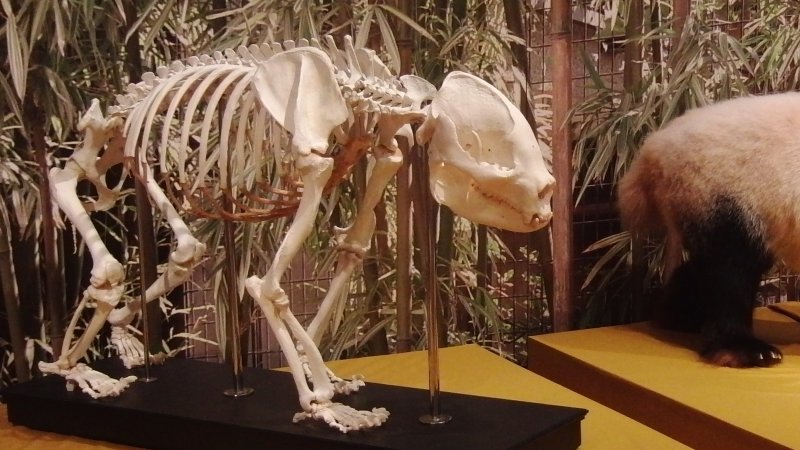
The skeleton of a giant panda. Photo: Wikimedia
The Hawaiian monk seal is a loveable creature. The 600-pound warm-water mammal spends most of its time flopping in the shore break, roughhousing with mates, and lazing about in the sun. Blogs like MonkSealMania are repositories of photos of the endangered animals sleeping in improbable positions. The creature’s native Hawaiian name translates, endearingly, to “dog that runs in rough water.”
All this makes the math even harder to swallow: we should let the Hawaiian monk seal go extinct.
“There’s just no way to save them,” says Leah Gerber, a professor at Arizona State University. Gerber’s neither heartless nor immune to the seal’s charms; she’s an ecologist and marine biologist who’s dedicated her career to protecting wildlife. She writes impassioned op-eds begging officials not to weaken the Endangered Species Act and calling for more funding. But her work’s much broader than just the monk seal. Gerber is one of the country’s leading proponents of what’s called species triage, a practice where conservationists use data and models to figure out how to spend our limited endangered species dollars as efficiently and effectively as possible. The practice has been used by governments in Australia and New Zealand, but it’s never made it to the United States. The goal is to save as many species as possible—even if it means calling it quits for creatures like the monk seal. “There’s a level of discomfort with this, but we have to face hard choices,” she says.
Gerber would never publicly prescribe extinction for any animal, but the Hawaiian monk seal is a prime example of how poorly we manage our endangered species spending, she says. Each year, the federal government spends about $5 million to protect the 1,400 seals left on earth. As significant as that sum sounds, it’s nowhere near enough to give them a real shot at survival. The seal’s habitat is spread across the 1,000-mile arc of the outer Hawaiian Islands; it is laborious and expensive to track them all, relocate juveniles to safe areas, and ensure dangerous garbage and debris stays out. To remove the seal from federally-funded life support would cost roughly $380 million and take over 50 years, researchers estimated in 2007.
Will the monk seal ever get that kind of funding? Not likely, if recent cuts to the seal program are any indication. And the monk seal is just one of thousands of endangered species whose rehabilitation we underfund. Protecting the 16,000 or so critically endangered species on Earth today would cost $76 billion, annually—about 52 times what the U.S. spends each year.
The Sisyphean job that conservationists are tasked with—to try to save every endangered species on Earth, without anything near adequate resources—has led Gerber and other proponents of species triage to raise questions that would have been heretical in the field a generation ago. Like: Could the money we spend on the monk seal be better spent on other endangered species? And, if so, should we let the monk seal—or the giant panda or the snow leopard or the California condor—go extinct?
“We’re in the Anthropocene—the sixth mass extinction,” Gerber says. “The approach we’re taking right now is burying or heads in the sand and saying we’re not going to choose, we’re going to muddle through and see what things look like when we come up for air. And I’m saying ‘No, no, let’s shine a light on this because extinction is forever.’”
Controversial as species triage might be, Gerber may just get her wish. For the last two years, she’s has been working closely with the U.S. Fish and Wildlife Service to help develop a “prioritization” plan that would create “transparent approaches…





